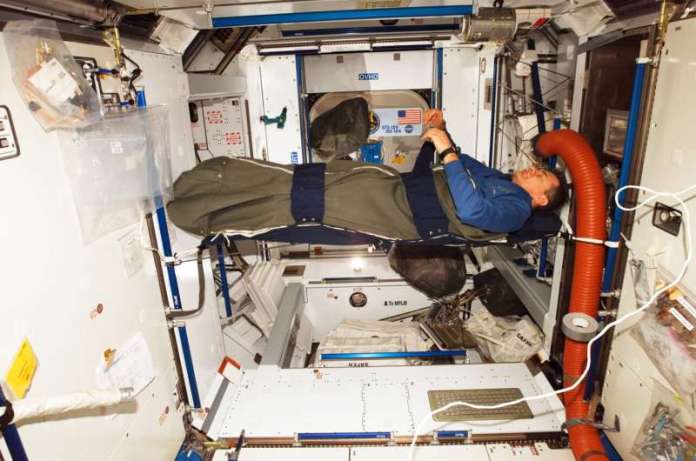
Hibernating astronauts could be the best way to save mission costs, reduce the size of spacecraft by a third and keep crew healthy on their way to Mars. An ESA-led investigation suggests that human hibernation goes beyond the realm of science-fiction and may become a game-changing technique for space travel.
When packing for a return flight to the red planet, space engineers account for around two years’ worth of food and water for the crew.
“We are talking about 30 kg per astronaut per day, and on top of that we need to consider radiation as well as mental and physiological challenges,” explains Jennifer Ngo-Anh, ESA research and payload coordinator of Human and Robotic Exploration and one of the authors of the paper that links biology to engineering.
Torpor during hibernation is an induced state that reduces the metabolic rate of an organism. This ‘suspended animation’ is a common mechanism in animals who wish to preserve energy.
Reducing the metabolic rate of a crew en route to Mars down to 25% of the normal state would dramatically cut down the amount of supplies and habitat size, making long-duration exploration more feasible.
“Where there is life, there is stress” reminds Jennifer. “The strategy would minimize boredom, loneliness and aggression levels linked to the confinement in a spacecraft,” she adds.
Mimicking therapeutic torpor, the idea of putting human into a state of hibernation, has been around in hospitals since the 1980s—doctors can induce hypothermia to reduce metabolism during long and complex surgeries. However, it is not an active reduction of energy. Studies on hibernation to visit other planets could offer new potential applications for patient care on Earth.
Don’t wake the bear
Animals hibernate to survive periods of cold and food or water scarcity, reducing their heart rate, breathing and other vital functions to a fraction of their normal life, while body temperature lowers close to ambient temperature. Tardigrades, frogs and reptiles are very good at it.
Bears seem to be the best role model for human hibernation in space. They have similar body mass to us and reduce their body temperature only by a few degrees—a limit considered safe for humans. Like bears, astronauts should acquire extra body fat before falling into a slumber.
During hibernation, brown and black bears retreat into their dens and experience six months of fasting and immobilization. If a person spends six months in bed, there is a major loss of muscle, bone strength and more risk of heart failure.
“However, research shows that bears exit their den healthily in spring with only marginal loss of muscle mass. It only takes them about 20 days to be back to normal. This teaches us that hibernation prevents disuse atrophy of muscle and bone, and protects against tissue damage,” explains Alexander Choukér, professor of Medicine at the Ludwig Maximilians University in Munich, Germany.
Lower testosterone levels seem to aid long hibernation in mammals, estrogens in humans strongly regulate energy metabolism.
“The very specific and different balance of hormones in females or males and their role in regulating metabolism suggest that women could be preferred candidates,” adds Alexander.
Enjoy your pod
Scientists suggest engineers build soft-shell pods with fine-tuned settings for sweet hibernation: a quiet environment with low lights, low temperature—less than 10 °C—and high humidity.
The astronauts would move very little, but would not be restrained, and wear clothing that avoids overheating. Wearable sensors would measure their posture, temperature and heart rate.
Every capsule should be surrounded by water containers that act as shield against radiation. “Hibernation will actually help protect people from the harmful effects of radiation during deep space travel. Away from Earth’s magnetic field, damage caused by high-energy particles can result in cell death, radiation sickness or cancer,” says Alexander.
With the crew at rest for long periods, artificial intelligence will come into play during anomalies and emergencies.
“Besides monitoring power consumption and autonomous operations, the computers onboard will maintain optimal performance of the spacecraft until the crew could be woken up,” explains Alexander.
– Advertisement –